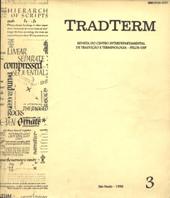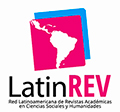Humor: é possível traduzi-lo e ensinar a traduzi-lo?
DOI:
https://doi.org/10.11606/issn.2317-9511.tradterm.1996.49896Keywords:
Translation, Humorous discourse Taxonomy of humor, Ambiguity, Joke, Jest, Riddle.Abstract
Humorous discourse, present most likely in every culture and society, creates problems and difficulties for the translator. Humor in many conversational exchanges contributes to the solidarity of the participants and increases the degree of their envolvement. The study of humor on the part of students of translation provides an excellent opportunity to deepen their linguistic and cultural sensibility. The answer to the question if it is possible to translate humor depends on the particular type of humorous discourse. When jokes and jest depend on the situation or context, that is, on the deviation from the normal workings of the world, there is no major problem in translation. However, when it is a question of humor that involves phonological, semantic and syntactic ambiguity, the task is indeed more complex due to the structural differences between the source and target language. It is important to observe that the criterion for the translation of jokes from a specific language to another should not be based on the reconstruction or recreation of an original humorous text. What is essential is faithfulness to the original, but the obligation re(create) a humorous effect in the target language. I argue in this paper that the study humor in undergraduate courses in translation presents an excellent opportunity to deepen only the linguistic sensibility but also the students inter-cultural awareness.Downloads
Download data is not yet available.
Downloads
Published
1996-12-18
Issue
Section
Translation
License
Autores que publicam nesta revista concordam com os seguintes termos:
- Autores mantém os direitos autorais e concedem à revista o direito de primeira publicação, com o trabalho simultaneamente licenciado sob a Licença Creative Commons Attribution BY-NC-SA que permite o compartilhamento do trabalho com reconhecimento da autoria e publicação inicial nesta revista.
- Autores têm autorização para assumir contratos adicionais separadamente, para distribuição não-exclusiva da versão do trabalho publicada nesta revista (ex.: publicar em repositório institucional ou como capítulo de livro), com reconhecimento de autoria e publicação inicial nesta revista.
- Autores têm permissão e são estimulados a publicar e distribuir seu trabalho online (ex.: em repositórios institucionais ou na sua página pessoal) a qualquer ponto antes ou durante o processo editorial, já que isso pode gerar alterações produtivas, bem como aumentar o impacto e a citação do trabalho publicado (Veja O Efeito do Acesso Livre).
How to Cite
Schmitz, J. R. (1996). Humor: é possível traduzi-lo e ensinar a traduzi-lo?. TradTerm, 3, 87-97. https://doi.org/10.11606/issn.2317-9511.tradterm.1996.49896








